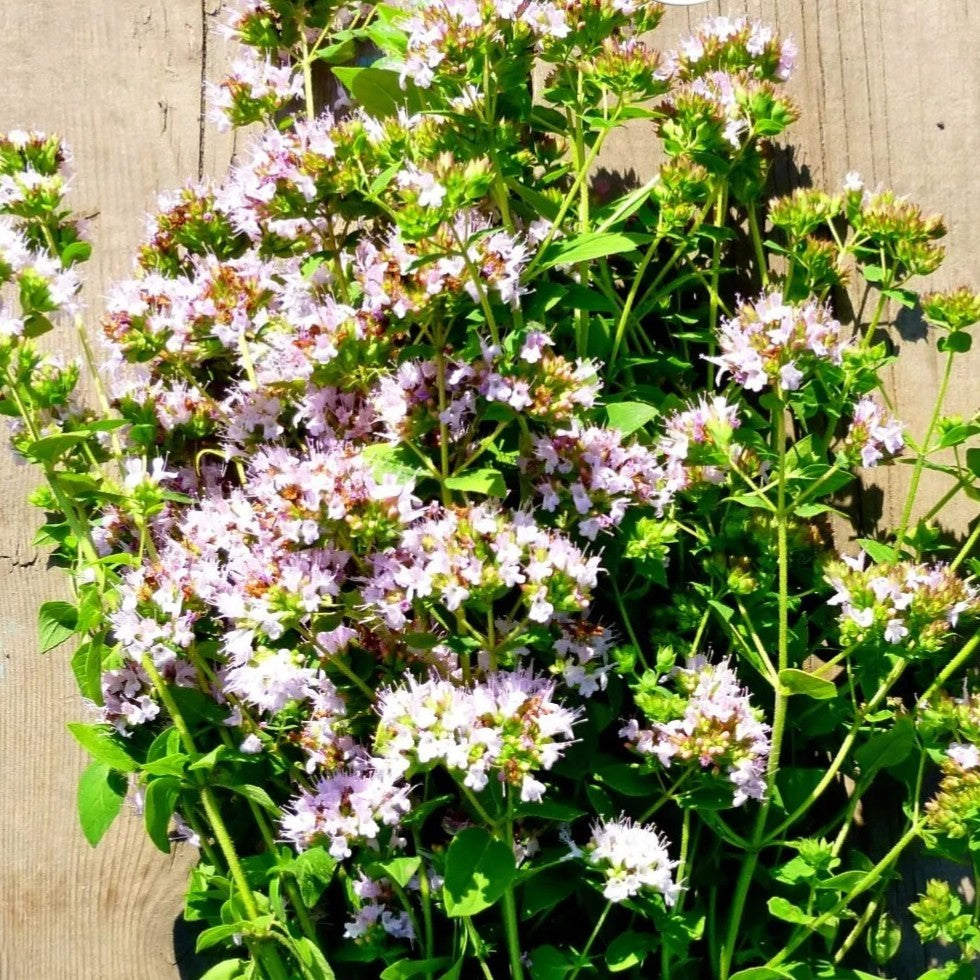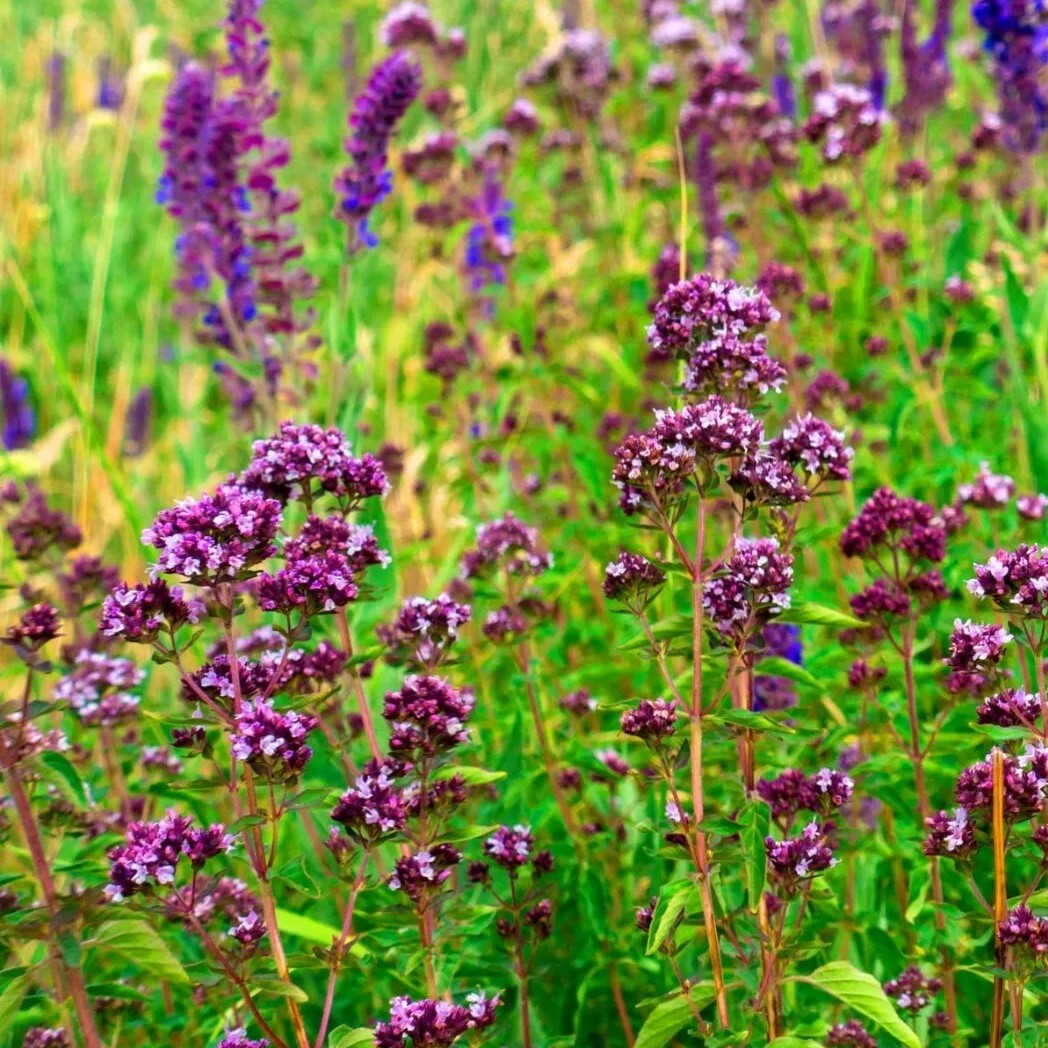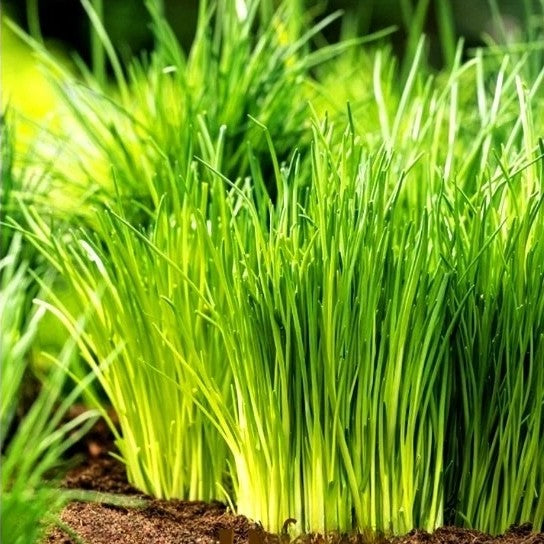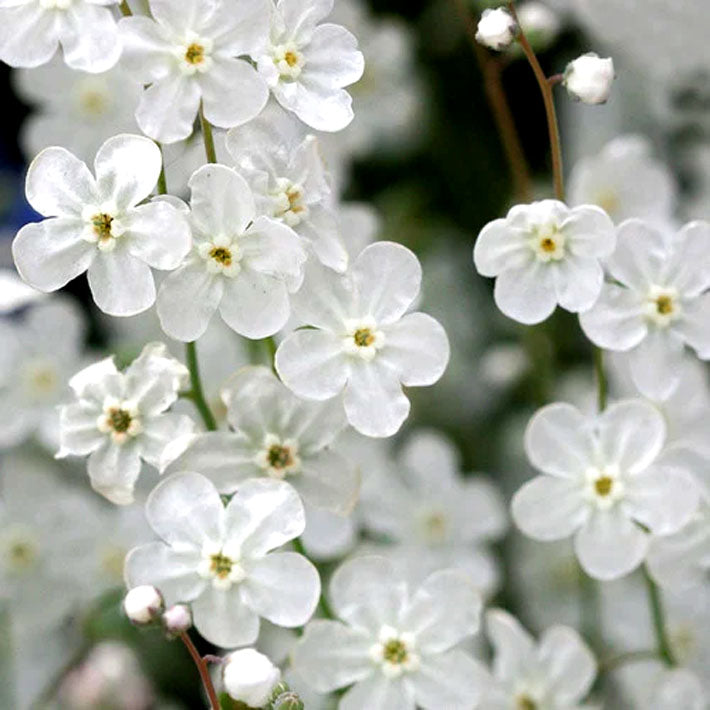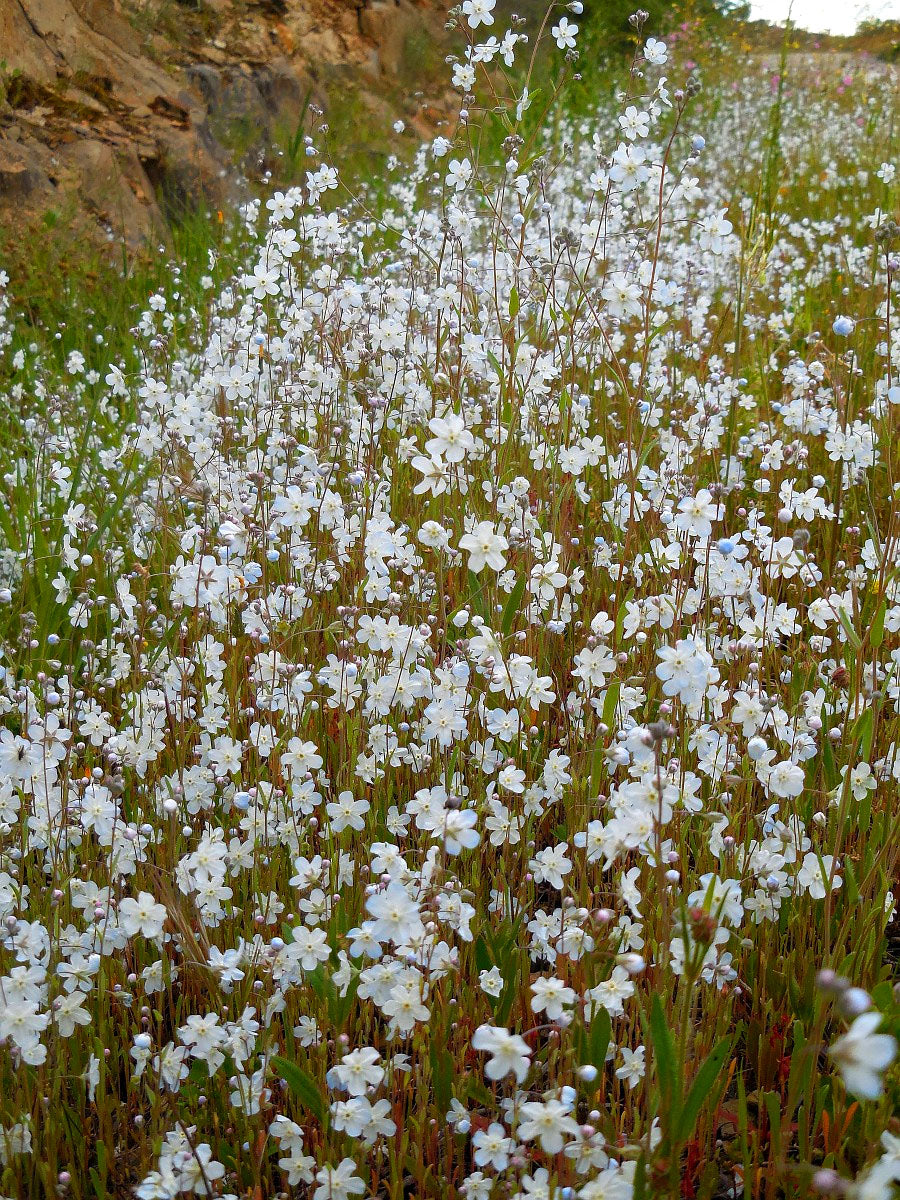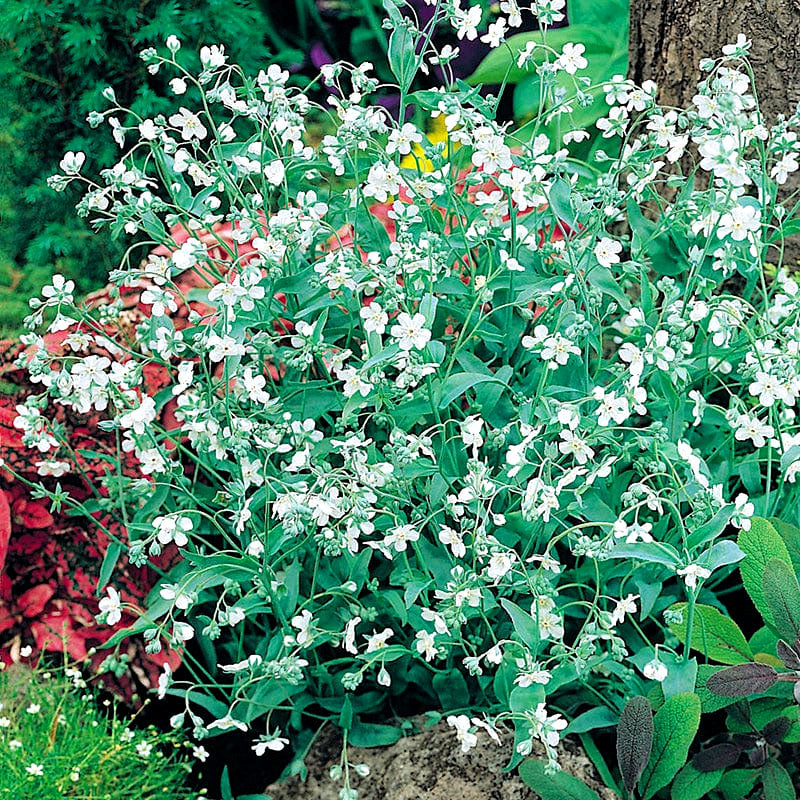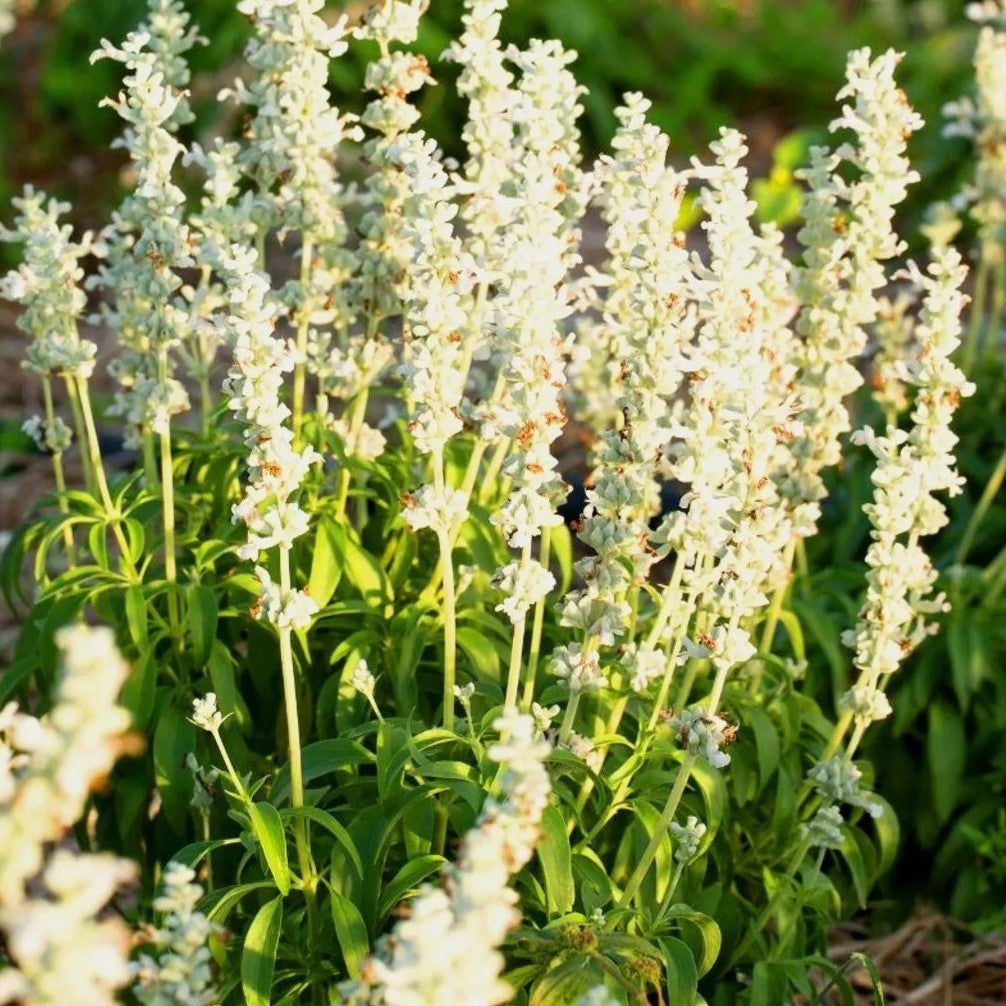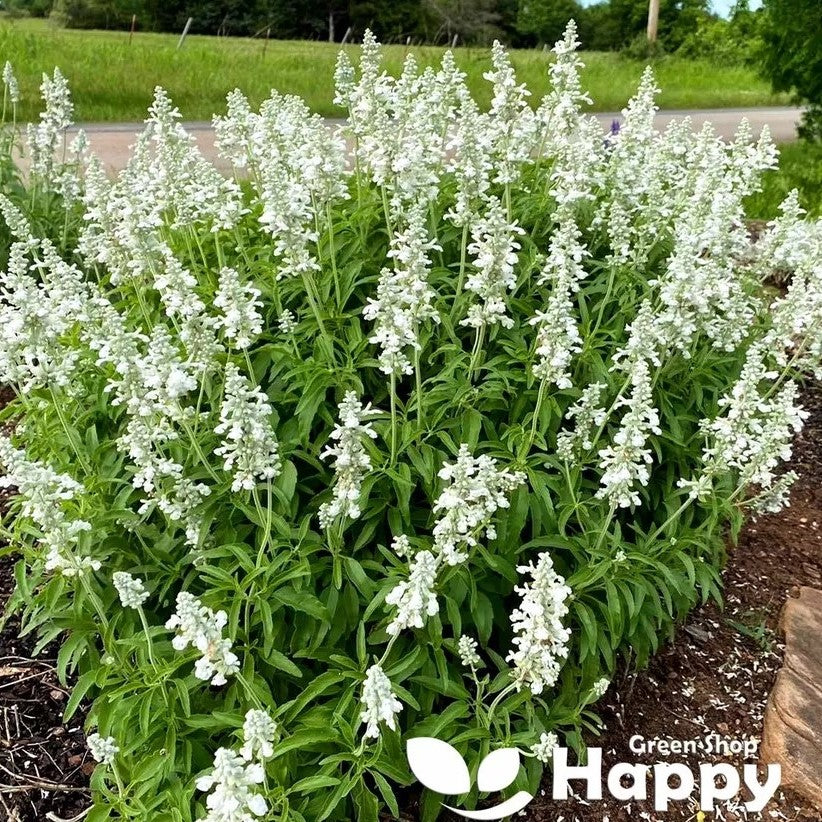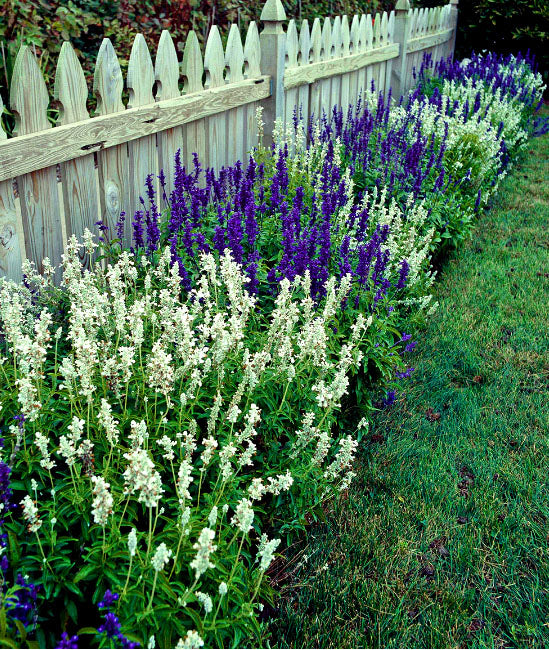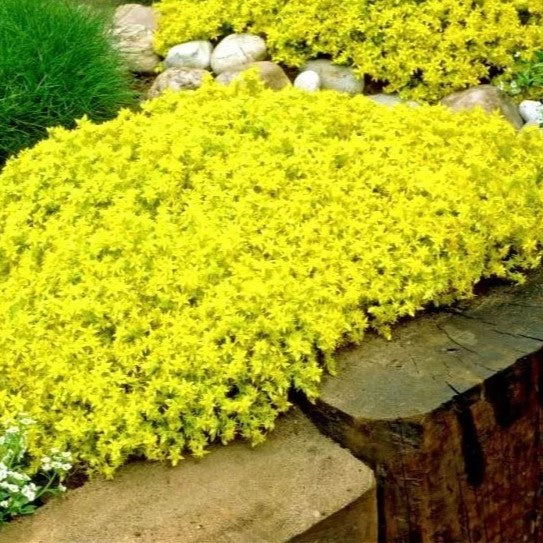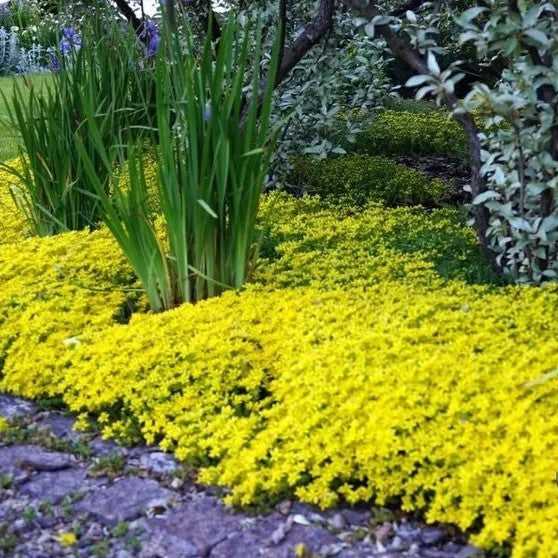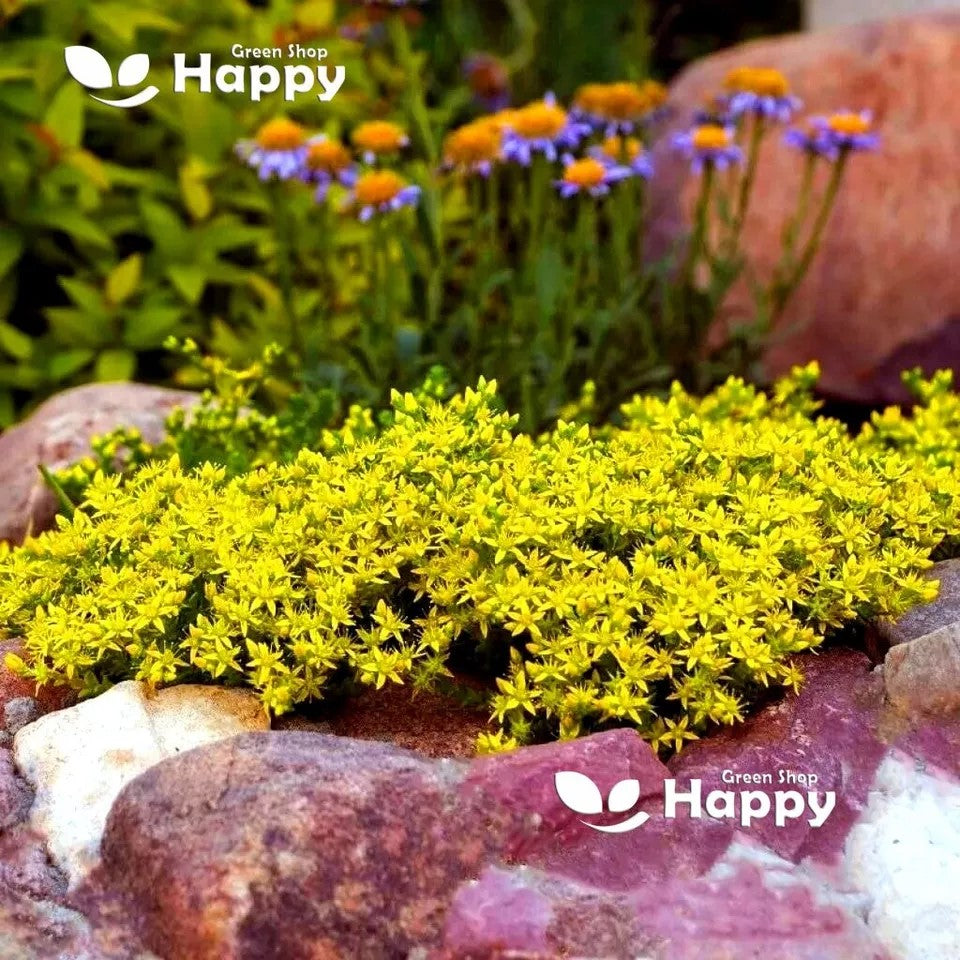Sort by:
211 products
211 products
Wild Marjoram – Oregano – Seeds (Origanum vulgare)
Wild Marjoram (Oregano) is a hardy perennial herb cherished for its fragrant leaves and delicate pink-purple flowers. A staple of Mediterranean cooking, oregano adds a rich, earthy flavor to pizzas, pasta, sauces, and roasted vegetables. Beyond the kitchen, its nectar-rich flowers are a magnet for bees and butterflies, making it a wonderful addition to herb gardens, borders, and pollinator-friendly spaces.
How to Grow
-
Sow indoors: March – May in seed trays or pots.
-
Transplant outdoors: After the last frost in a sunny, well-drained spot.
-
Spacing: 25–30 cm apart.
-
Oregano prefers light, well-drained soil and thrives in warm, sunny conditions.
Key Features
-
Aromatic herb essential for Mediterranean cuisine
-
Hardy perennial, easy to grow
-
Attracts bees and butterflies with summer blooms
-
Suitable for pots, containers, or borders
-
Drought-tolerant once established
Ideal For
-
Culinary herb gardens
-
Fresh or dried use in cooking
-
Pollinator-friendly borders
-
Container growing on patios or balconies
Sowing & Harvest
-
Sow: March – May
-
Harvest: June – October (leaves can be harvested fresh or dried)
Quick Tip
For the most intense flavor, harvest oregano leaves just before flowering, and dry them in a cool, airy place.
Fine Leaved Chives Seeds (Allium schoenoprasum)
Add fresh, mild onion flavor to your dishes with Fine Leaved Chives, a classic herb with slender, dark green leaves and delicate edible flowers. Ideal for salads, soups, sauces, and garnishes, this perennial herb is easy to grow and provides harvests year after year. Its compact growth habit makes it perfect for garden beds, borders, and containers.
How to Grow
-
Sow indoors 6–8 weeks before the last frost or directly outdoors in spring.
-
Prefers fertile, well-drained soil in full sun or light shade.
-
Sow seeds 0.5 cm deep in rows 20–25 cm apart.
-
Thin seedlings to 15 cm apart.
-
Harvest leaves regularly to encourage bushy growth.
Key Features
-
Perennial herb with fine, slender leaves
-
Mild, fresh onion flavor for culinary use
-
Compact and easy to grow in beds or containers
-
Long-lasting harvest year after year
-
Attractive edible purple flowers
Ideal For
-
Fresh salads, soups, sauces, and garnishes
-
Container and herb gardens
-
Gardeners seeking perennial, low-maintenance herbs
-
Adding flavor and ornamental interest to beds
Sowing
-
Best time: Early spring indoors or direct sow outdoors
-
Depth: 0.5 cm
-
Row spacing: 20–25 cm
-
Plant spacing: Thin to 15 cm apart
-
Harvest: From 8–10 weeks after sowing
Quick Tip
-
Trim leaves regularly to promote fresh, tender growth and prevent flowering if desired.
Chinese Lantern Plant Seeds (Physalis alkekengi)
Add a touch of magic to your garden with the Chinese Lantern Plant (Physalis alkekengi). This striking perennial is known for its bright orange, papery husks that resemble glowing lanterns, making it a stunning feature in borders, containers, and dried floral arrangements. Easy to grow and hardy, it brings late-season color and unique ornamental value.
How to Grow
-
Sow seeds indoors in spring or directly outdoors after frost.
-
Use well-drained, fertile soil in full sun or light shade.
-
Sow seeds 0.5 cm deep and thin seedlings to 30–45 cm apart.
-
Keep soil moist until plants are established.
-
Harvest husks in late summer to early autumn for fresh or dried decoration.
Key Features
-
Produces vibrant orange, lantern-like husks
-
Hardy perennial with long-lasting ornamental appeal
-
Excellent for fresh gardens and dried floral arrangements
-
Easy to grow in borders, beds, and containers
-
Adds late-season interest and garden color
Ideal For
-
Ornamental borders and cottage gardens
-
Dried floral displays and autumn decorations
-
Containers and garden edges
-
Gardeners seeking unique, eye-catching plants
Sowing
-
Best time: Spring indoors or after frost outdoors
-
Depth: 0.5 cm
-
Spacing: 30–45 cm apart
-
Prefers full sun to partial shade, fertile soil
Quick Tip
-
Cut stems just as lanterns turn bright orange for the best results in dried arrangements.
Gazania ‘Promesa Dwarf Mixed’ Seeds (Gazania splendens)
Brighten your garden with Gazania ‘Promesa Dwarf Mixed’ (Gazania splendens). This compact annual produces a mix of vibrant daisy-like blooms in shades of yellow, orange, and red, perfect for borders, containers, and rock gardens. Easy to grow and long-flowering, it attracts pollinators and adds cheerful color to sunny spots throughout the season.
How to Grow
-
Sow seeds indoors 6–8 weeks before the last frost or directly outdoors after frost risk has passed.
-
Use well-drained soil in full sun.
-
Lightly cover seeds with soil and keep moist until germination (10–14 days).
-
Thin seedlings to 20–25 cm apart once established.
-
Deadhead spent flowers to encourage continuous blooming.
-
Water moderately; drought-tolerant once established.
Key Features
-
Vibrant daisy-like blooms in yellow, orange, and red shades
-
Compact, long-flowering annual
-
Easy to grow and maintain
-
Ideal for borders, containers, and rock gardens
-
Attracts bees, butterflies, and other pollinators
Ideal For
-
Flower beds, borders, and patio planters
-
Rock gardens and container plantings
-
Pollinator-friendly gardens
-
Sunny spots requiring low-maintenance, colorful blooms
Sowing
-
Best time: 6–8 weeks before last frost indoors or after frost outdoors
-
Germination: 10–14 days
-
Sow thinly, cover lightly, and keep soil moist
-
Prefers full sun and well-drained soil
Quick Tip
-
Deadhead regularly to prolong flowering and maintain compact, bushy growth.
Blanket Flower ‘Burgundy’ Seeds (Gaillardia aristata)
Bring vibrant late-summer color to your garden with Blanket Flower ‘Burgundy’ (Gaillardia aristata). This hardy perennial produces striking burgundy-red daisy-like blooms with golden tips, perfect for borders, beds, and pollinator-friendly gardens. Easy to grow and long-flowering, it attracts bees and butterflies while adding a cheerful, naturalized look to your landscape.
How to Grow
-
Sow seeds directly outdoors in spring or indoors 6–8 weeks before the last frost.
-
Use well-drained soil in full sun.
-
Scatter seeds thinly and cover lightly with soil.
-
Keep soil moist until germination (10–14 days).
-
Thin seedlings to 25–30 cm apart once established.
-
Deadhead spent flowers to encourage continuous blooming.
Key Features
-
Striking burgundy-red blooms with golden tips
-
Hardy perennial, long-flowering and easy to grow
-
Ideal for borders, beds, and naturalized plantings
-
Attracts bees, butterflies, and other pollinators
-
Adds vibrant late-summer color to garden landscapes
Ideal For
-
Flower borders and cottage gardens
-
Pollinator-friendly garden beds
-
Naturalized and wildflower-style plantings
-
Cutting gardens for fresh bouquets
Sowing
-
Best time: Spring outdoors or 6–8 weeks earlier indoors
-
Germination: 10–14 days
-
Sow thinly, cover lightly, and keep soil moist
-
Prefers full sun and well-drained soil
Quick Tip
-
For extended flowering, sow in drifts or clusters and remove spent blooms regularly.
Venus’s Navelwort Seeds (Omphalodes linifolia)
Add charming groundcover to shaded areas with Venus’s Navelwort (Omphalodes linifolia). This perennial produces delicate, star-shaped blue flowers above lush green foliage, forming a carpet of color in spring and early summer. Hardy and easy to grow, it’s perfect for woodland gardens, borders, and shady rock gardens, attracting pollinators and adding a soft, natural touch.
How to Grow
-
Sow seeds indoors in late winter or outdoors in early spring.
-
Use well-drained, humus-rich soil in partial to full shade.
-
Scatter seeds thinly on the soil surface and press lightly; do not cover.
-
Keep soil consistently moist until germination (14–28 days).
-
Thin seedlings to 20–25 cm apart once established.
-
Mulch around plants to retain moisture and encourage healthy growth.
Key Features
-
Delicate star-shaped blue flowers over lush green foliage
-
Hardy perennial, forming a dense groundcover
-
Ideal for shaded borders, woodland gardens, and rock gardens
-
Attracts pollinators including bees and butterflies
-
Low-maintenance and long-lasting
Ideal For
-
Shaded garden beds and borders
-
Woodland and cottage-style gardens
-
Rock gardens and naturalized plantings
-
Pollinator-friendly landscapes
Sowing
-
Best time: Late winter indoors or early spring outdoors
-
Germination: 14–28 days
-
Sow thinly, press lightly, do not cover
-
Prefers partial to full shade and well-drained, humus-rich soil
Quick Tip
-
Provide consistent moisture and partial shade for best flowering and lush foliage.
Cape Daisy Mix Seeds (Venidium fastuosum)
Add long-lasting summer color with Cape Daisy Mix (Venidium fastuosum). This hardy annual produces vibrant daisy-like blooms in shades of yellow, orange, and gold, bringing brightness to borders, beds, and containers. Easy to grow and drought-tolerant once established, it attracts pollinators and provides a cheerful display throughout the season.
How to Grow
-
Sow seeds directly outdoors in spring after the last frost or indoors 4–6 weeks earlier.
-
Use well-drained soil in full sun.
-
Scatter seeds thinly and cover lightly with soil.
-
Keep soil moist until germination (10–14 days).
-
Thin seedlings to 25–30 cm apart once established.
-
Deadhead spent flowers regularly to encourage continuous blooming.
Key Features
-
Vibrant daisy-like blooms in yellow, orange, and gold shades
-
Long-flowering, hardy annual
-
Easy to grow and drought-tolerant
-
Ideal for borders, beds, and containers
-
Attracts bees, butterflies, and other pollinators
Ideal For
-
Flower beds and borders
-
Containers, patio planters, and window boxes
-
Pollinator-friendly gardens
-
Cottage and naturalized garden styles
Sowing
-
Best time: Spring outdoors or 4–6 weeks earlier indoors
-
Germination: 10–14 days
-
Sow thinly, cover lightly, and keep soil moist
-
Prefers full sun and well-drained soil
Quick Tip
-
Deadhead regularly to maintain vibrant blooms and encourage prolonged flowering.
Mealy Cup Sage ‘White Victory’ Seeds (Salvia farinacea)
Add elegance and long-lasting color to your garden with Mealy Cup Sage ‘White Victory’ (Salvia farinacea). This hardy annual produces spikes of pure white flowers above silvery-green foliage, creating a striking vertical accent in borders, beds, and containers. Easy to grow and drought-tolerant once established, it attracts pollinators and offers a long season of interest from summer through autumn.
How to Grow
-
Sow seeds indoors 6–8 weeks before the last frost or directly outdoors after frost risk has passed.
-
Use well-drained soil in a sunny location.
-
Lightly cover seeds with soil and keep moist until germination (10–14 days).
-
Thin seedlings to 25–30 cm apart once established.
-
Water regularly, reducing frequency once plants are established.
-
Deadhead spent flowers to encourage continuous blooming.
Key Features
-
Spikes of pure white flowers above silvery-green foliage
-
Long-flowering annual from summer through autumn
-
Drought-tolerant and easy to grow
-
Excellent for borders, beds, and containers
-
Attracts bees, butterflies, and other pollinators
Ideal For
-
Flower borders and beds
-
Containers, patio planters, and window boxes
-
Pollinator-friendly gardens
-
Cut flower arrangements
Sowing
-
Best time: 6–8 weeks before last frost indoors, or after frost outdoors
-
Germination: 10–14 days
-
Sow thinly, cover lightly, and keep soil moist
-
Prefers full sun and well-drained soil
Quick Tip
-
Deadhead regularly to encourage prolonged flowering and maintain a tidy appearance.
Yellow Stonecrop Seeds (Sedum acre)
Bring bright, low-maintenance charm to your garden with Yellow Stonecrop (Sedum acre). This hardy succulent produces dense mats of tiny, star-shaped yellow flowers over fleshy green foliage, creating a vibrant groundcover that thrives in sunny, well-drained spots. Perfect for rock gardens, borders, and container planting, it’s an ideal choice for gardeners seeking easy-care, drought-tolerant plants.
How to Grow
-
Sow directly outdoors in spring or autumn.
-
Use well-drained soil in a sunny location.
-
Scatter seeds thinly on the soil surface and press lightly without covering.
-
Keep soil lightly moist until germination (14–21 days).
-
Once established, Yellow Stonecrop requires minimal watering.
-
Trim back if needed to maintain neat growth and encourage denser mats.
Key Features
-
Tiny, star-shaped yellow flowers over fleshy green foliage
-
Hardy, low-maintenance perennial groundcover
-
Thrives in poor, dry soils and sunny locations
-
Ideal for rock gardens, walls, and containers
-
Drought-tolerant and long-lasting
Ideal For
-
Rock gardens and sunny borders
-
Container and patio planting
-
Groundcover for dry or poor soils
-
Pollinator-friendly landscapes
Sowing
-
Best time: Spring or autumn
-
Germination: 14–21 days
-
Sow thinly on soil surface and press lightly
-
Prefers full sun and well-drained soil
Quick Tip
-
Allow mats to spread naturally for a dense, vibrant groundcover that blooms year after year.
Showing 18/211





